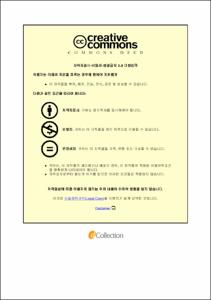차나무 부위별 추출물의 식품 및 화장품 원료로의 효능 평가
- Alternative Title
- Evaluation of the extract efficacy prepared from different parts of Camellia sinensis as food and cosmetic raw material
- Abstract
- Green tea is a representative health food that is consumed worldwide. As such, Camellia sinensis (C. sinensis) is cultivated and produced in many regions and used in various industries such as food, cosmetics, and tourism. In this study, the physiological properties of five different parts (leaves, branches, flowers, seeds, and roots) of C. sinensis were compared to determine the possibility of using other parts in addition to the leaves of C. sinensis. A 70% ethanol extract for each part of C. sinensis was prepared and yield, total phenolic content, total flavonoid content, DPPH, TEAC, FRAP, ORAC, α-glucosidase, tyrosinase inhibitory activity, elastase inhibitory activity, antibacterial activity against Propionibacterium acnes, high-performance liquid chromatography (HPLC) component analysis, UVB-induced cell damage protection was evaluated and compared. The yield was the highest in flowers and leaves, and the total phenolic content was high in the order of leaves, roots, branches, flowers, and seeds. The total flavonoid content was the highest in the leaves, and there was no significant difference between the remaining parts. Antioxidant experiments including DPPH, TEAC, FRAP and ORAC showed a similar tendency to the total phenolic content. The α-glucosidase activity showed a higher rate of inhibition than that of acarbose, a hypoglycemic agent, in all parts except for the seeds which had no activity, and the highest inhibition rate was noted in the roots. The tyrosinase inhibitory activity was high in the leaves, flowers, and roots, and elastase had high inhibition activity rates in the roots, leaves, and branches. Antibacterial activity against P. acnes was high in the leaves and roots, followed by the branches and flowers, but no antibacterial activity was observed in the seeds. The trend of antibacterial activity was very similar to that of total phenolic content and antioxidant activity. HPLC was used to determine the catechin compounds and it was confirmed that EGC and EGCG were most concentrated in leaves, and EC, GCG, and GC contents were varyingly dispersed across all parts. In the evaluation of the protective effect again UVB irradiation cell damage, the experimental group treated with the seed extract in HaCaT cells showed good efficacy. In Detroit cells, it was confirmed that the survival rate was improved in most of the experimental groups treated with the extract, and the survival rate was especially high in the seeds and flowers. The results of this experiment indicate that various parts of C. sinensis such as flowers, roots, branches, and seeds other than the leaves can be used as cosmetic raw materials. In conclusion, C. sinensis leaves, branches, flowers, seeds, and roots have different physiological activities and their value in the use of health functional food and cosmetics is high.
- Issued Date
- 2023
- Awarded Date
- 2023-02
- Type
- Dissertation
- Alternative Author(s)
- Im Sang Hwi
- Affiliation
- 제주대학교 대학원
- Department
- 대학원 농학과
- Advisor
- 김주성
- Table Of Contents
- LIST OF TABLES
LIST OF FIGURES
ABSTRACT
Ⅰ. 서론. 1
Ⅱ. 연구사. 4
1. 차나무. 4
2. 차나무의 성분과 활용. 4
3. 차나무의 연구 현황과 기능성. 7
4. 차나무 잎 외 다른 부위에 대한 연구. 11
Ⅲ. 재료 및 방법. 14
1. 시료 및 추출물의 제조. 14
2. 총 페놀 함량 측정. 16
3. 총 플라보노이드 함량 측정. 16
4. 항산화 활성 측정. 17
1) 1,1-Diphenyl-2-picrylhydrazyl (DPPH) radical 소거 활성 측정. 17
2) Trolox equivalent antioxidant capacity (TEAC) 측정 . 17
3) Ferric reducing antioxidant power (FRAP) 측정 . 18
4) Oxygen radical absorbance capacity (ORAC) 측정. 19
5. α-Glucosidase 저해활성 측정 19
6. Tyrosinase 저해활성 측정 20
7. Elastase 저해활성 측정. 20
8. 여드름 유발균에 대한 항균 활성 측정. 21
9. High performance liquid chromatography (HPLC)를 이용한 성분 분석 . 22
10. UVB 유도성 세포 손상 보호능 평가 . 24
1) 세포 배양 24
2) 피부 세포 독성 평가 24
3) UVB 유도성 세포 손상 보호능 평가. 25
11. 통계처리. 25
Ⅳ. 연구결과 및 고찰. 26
1. 추출 수율. 26
2. 총 페놀 함량. 28
3. 총 플라보노이드 함량. 30
4. 항산화 활성. 32
1) DPPH radical 소거 활성. 32
2) TEAC. 34
3) FRAP . 35
4) ORAC 36
5. α-Glucosidase 저해활성 39
6. Tyrosinase 저해활성 41
7. Elastase 저해활성. 44
8. 여드름 유발균에 대한 항균 활성. 47
9. HPLC 를 이용한 성분 분석. 49
10. UVB 유도성 세포 손상 보호능 . 51
1) 차나무 부위별 추출물의 피부 세포 독성 51
2) UVB 유도성 세포 손상 보호능. 53
Ⅴ. 결론. 56
인용문헌 58
- Degree
- Master
- Publisher
- 제주대학교 대학원
- Citation
- 임상휘. (2023). 차나무 부위별 추출물의 식품 및 화장품 원료로의 효능 평가.
- Appears in Collections:
- General Graduate School > Agricultural Science
- 파일 목록
-
-
Download
 차나무 부위별 추출물의 식품 및 화장품 원료로의 효능 평가.pdf
기타 데이터 / 1.67 MB / Adobe PDF
차나무 부위별 추출물의 식품 및 화장품 원료로의 효능 평가.pdf
기타 데이터 / 1.67 MB / Adobe PDF
-
Items in Repository are protected by copyright, with all rights reserved, unless otherwise indicated.